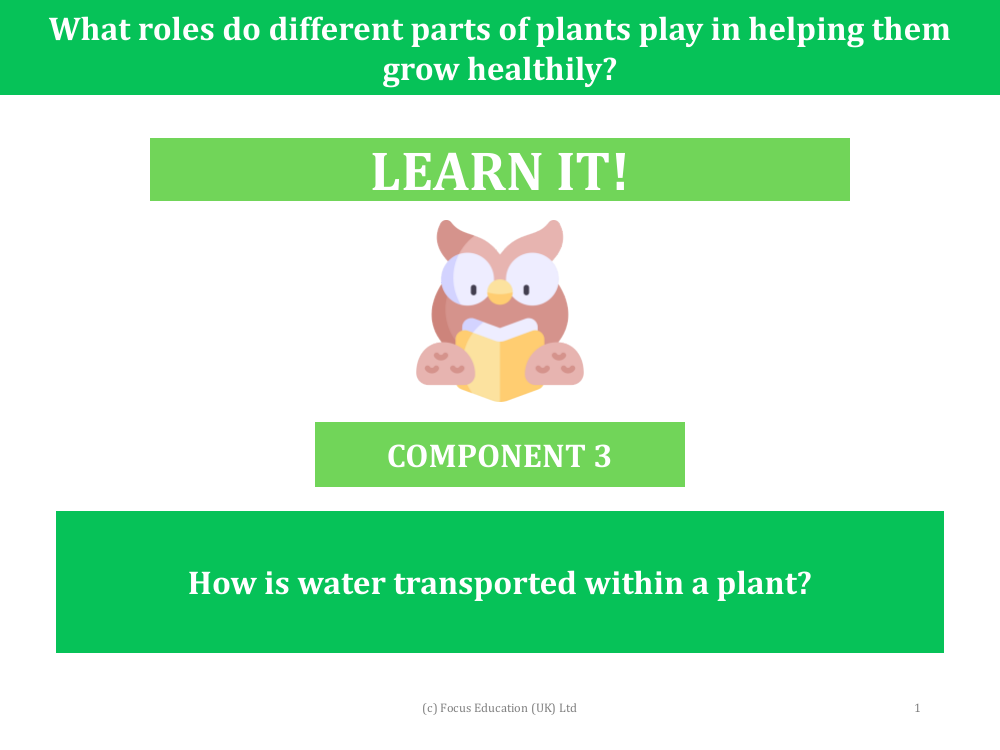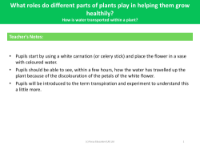How is water transported within a plant? - presentation

Science Resource Description
Understanding how water is transported within a plant is essential for grasping how these organisms grow healthily. To demonstrate this process, teachers can use a simple and visual experiment involving a white carnation or a celery stick. By placing the plant in a vase filled with coloured water, students can observe the movement of water through the plant's system. Within a few hours, the petals of the carnation will start to show discolouration, indicating that the water has travelled up from the stem. This experiment introduces students to the concept of transpiration, which they can explore further through additional activities.
Plants have a sophisticated transport system consisting of two types of tissues: xylem and phloem. The xylem is responsible for transporting water from the roots to the leaves, while the phloem carries food produced in the leaves to the rest of the plant. Despite lacking a circulatory system like animals, plants efficiently move substances through these continuous tubes made from rows of cells. To delve deeper into the process of transpiration, students can conduct another experiment using two large plastic bags. By covering a plant with one bag and observing over an hour, students will notice condensation, which is evidence of the water vapour released by the plant. Writing up observations and explanations helps students solidify their understanding of how different parts of a plant contribute to its growth and health.


